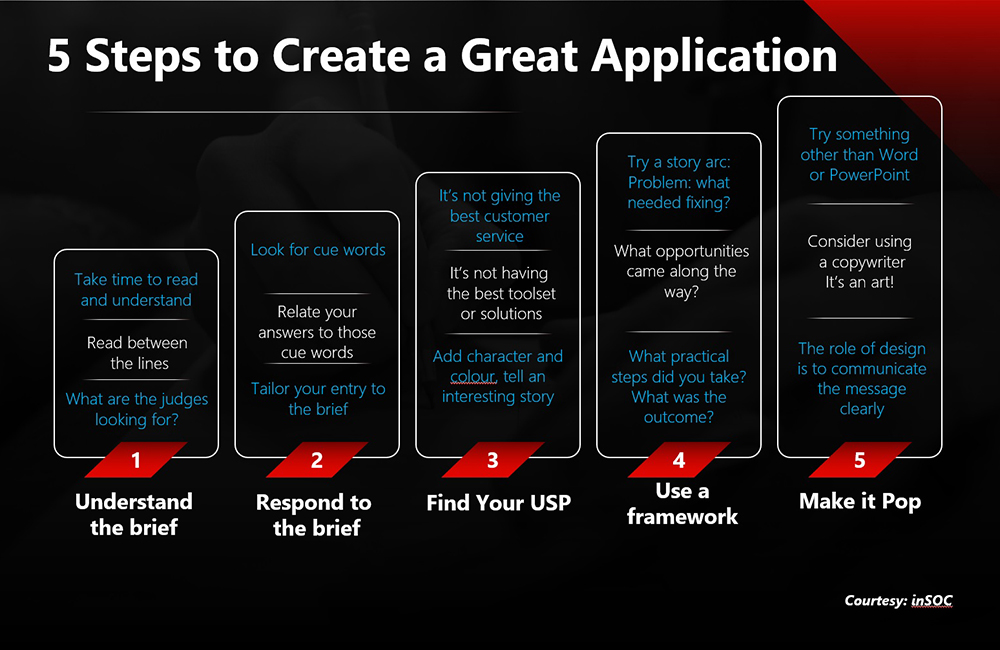 One of the most overlooked ways to help your business is to apply for—and hopefully win—awards presented by your partners, community or industry. It’s a great marketing tactic that can really make your business stand out with prospects and customers, but many organizations think they either won’t win or don’t know how to create a strong submission. So they don’t try.
One of the most overlooked ways to help your business is to apply for—and hopefully win—awards presented by your partners, community or industry. It’s a great marketing tactic that can really make your business stand out with prospects and customers, but many organizations think they either won’t win or don’t know how to create a strong submission. So they don’t try.
But that doesn’t have to be the case, according to Kristian Wright, COO of inSOC Inc. The key is to figure out how to “stand out in a sea of sameness,” he said during a presentation at a CompTIA Community - UK&I meeting.
Overcoming Writer’s Block and Other Challenges
Most awards entries are so dull judges don’t even read all the way through them, and many can’t tell one entry from another, he said. To stand a great chance of winning, ask yourself four questions when filling out an application:
- Why are you entering the award?
- What do you hope to gain from it?
- What would winning do for your company?
- What other benefits might you gain from a win?
Awards entries take time and effort, and it can be difficult to articulate your accomplishments—many people are not comfortable touting themselves. Wright offered a five-step process to help ensure that your application will stand above the competition.
1. Understand the Application
Before you begin writing out an awards application form, take the time to read it and understand it. Know what the judges are looking for, what they’re not looking for, and how your company fits into those criteria.
“Many applications are bypassed or overlooked because they instead showcase the company’s own messaging but don’t answer the question that asked,” Wright said.
2. Answer the Questions, Speak the Judges’ Language
As you read the application, look for keywords and other cues that may hint at what the judges will find valuable.
“Once you find those keywords and themes, make sure you relate your answers back to those keywords. Tailor your entry around those and include those points in your response. There’s nothing judges can argue with if you’re responding to the themes and words they’re looking for,” he said. “Remember, you’re looking to respond what’s relatable to those words in your own business.”
3. Find Your Unique Selling Proposition
In almost every awards category, the winner won’t be selected by who gives the best customer service or who has the best solution or toolset. How you differentiate yourself in an application will go a long way in improving your chances of winning.
“Everybody thinks they are the best at customer service or a solution. You may well be the best, but it’s not particularly interesting to a panel of judges facing five entries all raving about how wonderful they are in those areas,” Wright said. “There’s nothing to differentiate you from anyone else. But if you have great stories in those areas, that’s something you can weave in.”
4. Use a Proven Framework to Tell Your Story
To add some character or color to your application, frame it around a story that you tell. If you can engage someone in a story, they’ll want to know what happens at the end, even if the topic is relatively dull, according to Wright.
Two options are to build a wave-like story arc, where you start with a problem (the low point), you develop a solution (at a crest), take additional steps necessary to solve the issue (back down low), and end with a happy customer (back on top).
“If you put it in Harry Potter terms, he’s trapped at the Dursleys, he goes to Hogwarts, has adventures, and defeats Voldemort and comes out well at the end. If you break it down into steps, you can get a good idea for a story or response,” he said.
A second method is a “STAR” framework consisting of: Situation, Task, Action, Results. “This often is used in job candidate situations to get the candidate to understand their capabilities. Remember that Task is the umbrella of what you have to do, and the Action is the individual steps that lead to the result,” he said.
5. Add Finishing Touches to Make it Pop
If they’re not part of an online or other standard application, most applications are submitted using either Microsoft Word or PowerPoint. If possible, consider other tools or formats to submit your application—one that nobody else has thought about.
In addition, utilize a copy writer to enhance your copy (if you can admit you’re not a great writer yourself) and find a great designer who can help you visually communicate your message in a clear manner. If you don’t have access to those skills, there are online platforms where you can hire freelance writers and designers to help with your applications.
“A copywriter turns my mundane copy into something exciting. I’m not saying give them information and say, ‘there you go.’ Give them a draft, a brief, and from there they will fashion something to bring it to life,” Wright said. “Meanwhile, people think of design as to only make something look nice, but the role is to communicate your message clearly, transforming it to make it easier for the reader to digest. The end result is you should have something that stands out.”
Learn more about CompTIA Spotlight Awards!
North America nominations are open! Apply now and get recognized for your innovation and thought leadership in the industry!


 Add CompTIA to your favorite RSS reader
Add CompTIA to your favorite RSS reader

